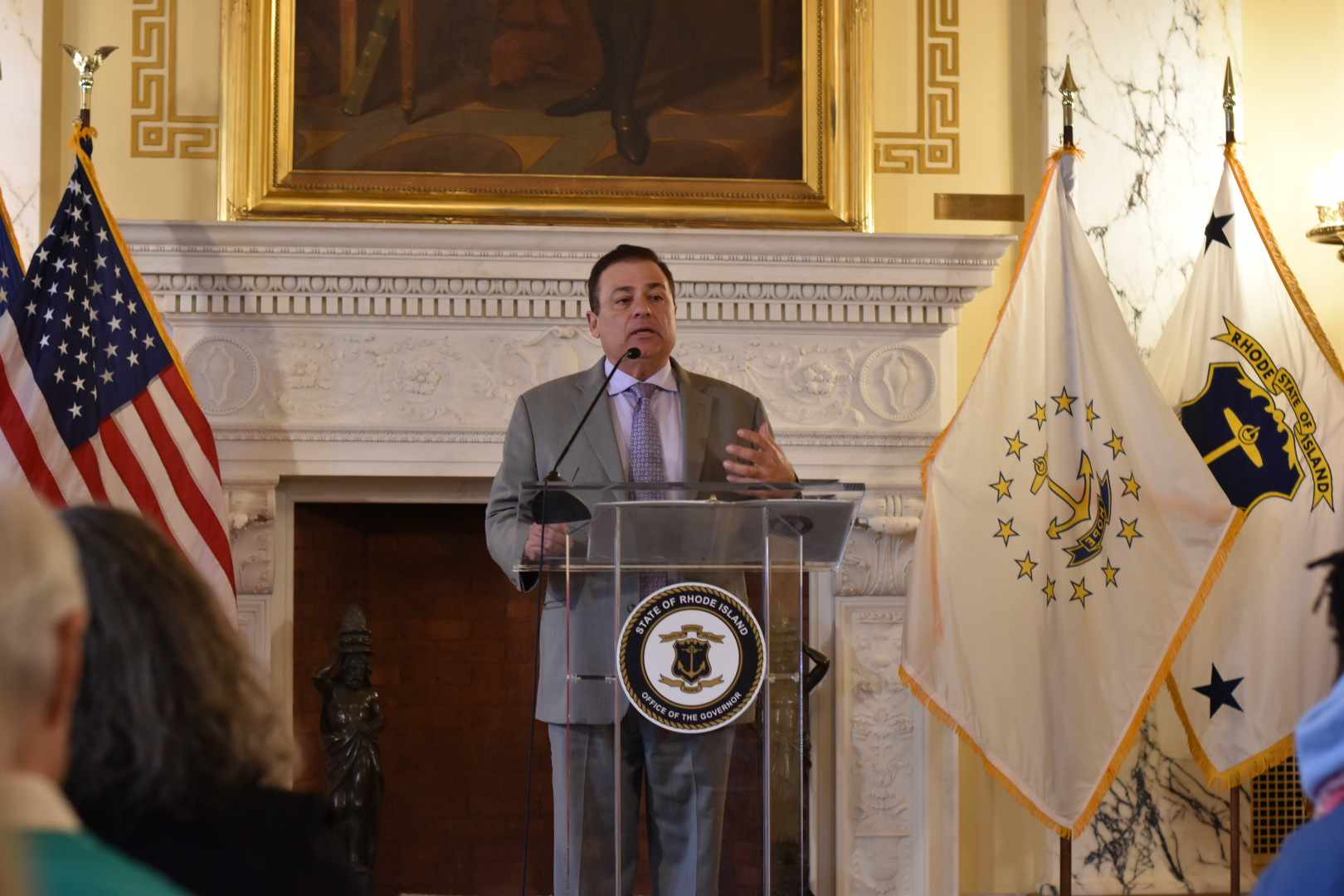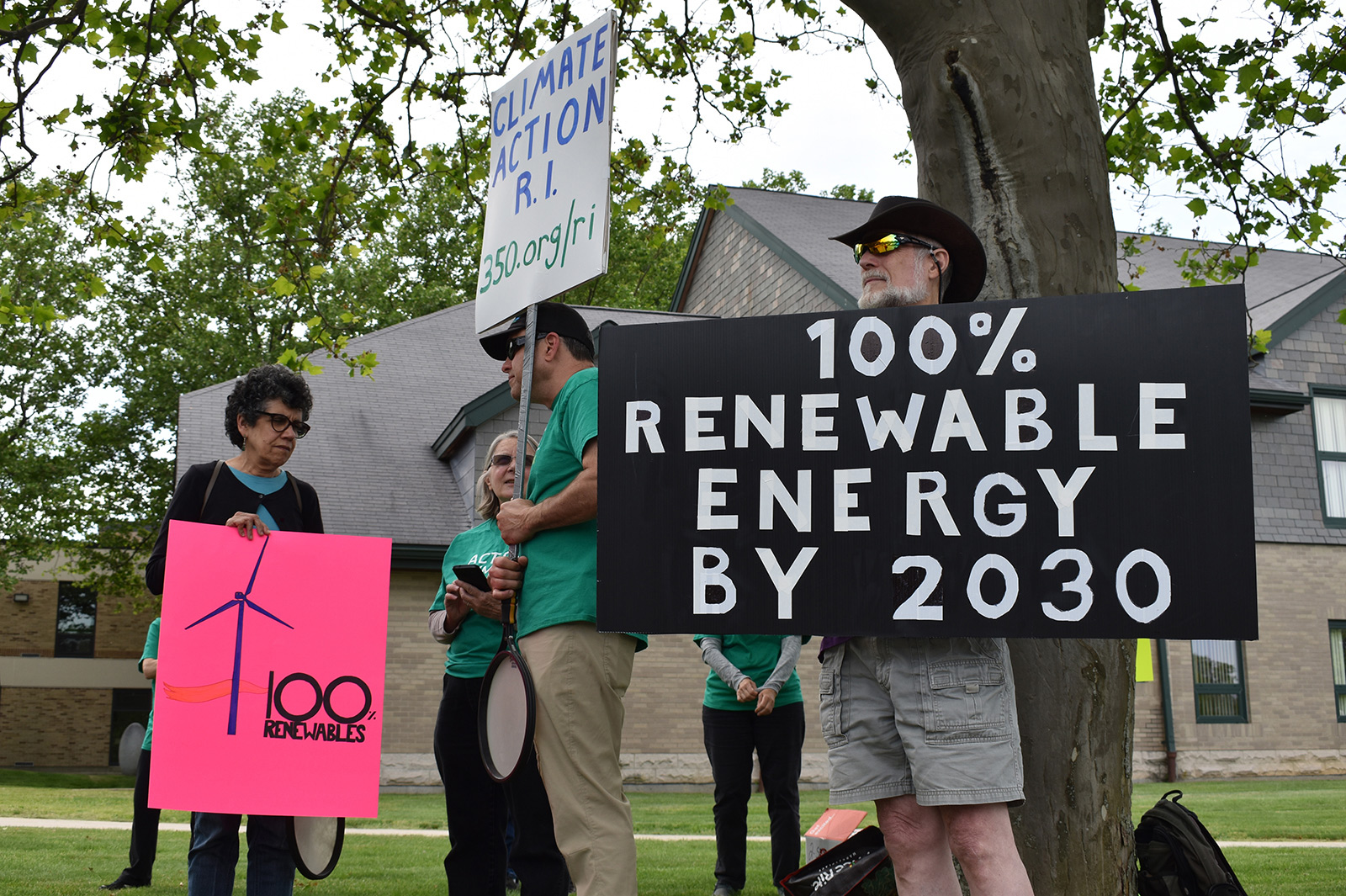R.I. Balks at Call for Stricter Drinking Water Standards
May 20, 2019
PROVIDENCE — The House Committee on the Environment and Natural Resources was recently awakened to the health concern known as PFASs. Pronounced pee-fahs, this class of chemical compounds called perfluoroalkyl and polyfluoroalkyl substances can be found in nearly everything we eat, drink and breathe.
PFASs were developed in the 1940s and introduced to consumer products in the 1960s, because of their waterproof, nonstick, and stain-resistant attributes. Branded products include Teflon, Scotchgard, and Stainmaster. It turns out those synthetic coatings and thousands of other chemicals with similar abilities cause cancer and are linked to a long list of health and development problems.
PFASs are persistent and pervasive, and hard to regulate. Nearly every public water supply and bottle of water have traces of PFASs, and animals and humans are infected with PFASs the moment they are conceived.
“The problem is, once it gets into the environment, it bioaccumulates in everyone,” Terry Gray, assistant director for the Rhode Island Department of Environmental Management (DEM), said during a May 16 House hearing.
Rainer Lohmann, associate professor at the University of Rhode Island’s Graduate School of Oceanography, has been studying the health impacts of PFASs and other industrial compounds for years.
“So the moment babies are born they have PFASs in them,” he said.” So that’s the sad aspect of this.”
Two types of PFASs are being phased out by the Environmental Protection Agency (EPA), but thousands of substitute compounds can be found in products such as to-go food containers, deli paper, and microwave popcorn bags.
After testing for high levels of PFASs, public water supplies in Burrillville, Cumberland, Westerly, and North Providence were switched to less contaminated water sources. The suspected cause of such contamination is most often firefighting foam. Other New England states have found drinking water wells at schools contaminated by floor waxes that contain PFASs.
President Trump’s rollback of federal environmental regulations has prompted some states to impose their own standards. Vermont and New Jersey have set safety limits for PFASs. Connecticut, Massachusetts, New Hampshire, New Jersey, New York, and Pennsylvania are developing them.
Rhode Island environmentalists, scientists, and health advocates say the EPA’s current 70 parts-per-trillion threshold is too high. In a House bill (H6064) they are asking for an interim state standard of 20 parts per trillion. In March, New Jersey set interim thresholds of 13 parts per trillion.
The bill is supported by Providence City Council member Rachel Miller, a trained chemist, who notes that the legislation will help protect public drinking water. The Conservation Law Foundation, Audubon Society of Rhode Island, and Clean Water Action Rhode Island also back the bill.
The PFASs crisis has been in the headlines since 2000, when chemical and adhesive giant 3M promised to stop marketing its Scotchgard products. In 2006, Johns Hopkins Hospital found PFASs in 99 percent of newborn umbilical chords.
But at the May 16 hearing, members of the House Committee on the Environment and Natural Resources seemed unaware of the scope of the problem, especially in Rhode Island. After hearing expert testimony, they began peppering the speakers with questions about PFASs in bottled water and municipal water supplies.
Gray explained that even through two types of PFASs are banned a vast amount of PFASs likely washed into the Providence River and the city’s wastewater treatment system after firefighting foam was used to control a tanker truck fuel spill on Allens Avenue last October.
Rhode Island Department of Health (DOH) associate director Seema Dixit said tests of water supplies have covered 90 percent of Rhode Islanders and that more testing will occur. DOH is working with the EPA to create new rules. Dixit said the state doesn’t need to legislate new thresholds.
“We believe we are doing everything we can about this set of chemicals,” she said. “We are ahead of the game with our testing around the state.”
Rep. Marcia Ranglin-Vassell, D-Providence, a member of the committee, said it was the first time she had heard of the PFAS problem. She called for a statewide education campaign in multiple languages to warn the public about the risks.
In a letter to the House committee, DEM director Janet Coit and DOH director Nicole Alexander-Scott argue against the legislation. They say research from the EPA and other states is a better guide for a new standard. Meanwhile, testing will continue of water supplies near fire stations, landfills, and places where floor waxes were dumped on the ground or into septic systems.
The wait-and-see sentiment and opposition to the legislation is shared by both the Pawtucket Water Supply Board and the Kingston Water District.
In submitted testimony, the American Chemistry Council (ACC) called the bill “deeply flawed and violates both basic scientific principals and standard administrative procedures.”
The ACC claimed that the science behind PFASs is unsettled and regulations shouldn’t be applied to a large class of chemicals. The chemical industry lobbying group called the legislation an unfunded mandate that would raise costs for municipalities and water customers.
The bill was held for further study.
Categories
Join the Discussion
View CommentsYour support keeps our reporters on the environmental beat.
Reader support is at the core of our nonprofit news model. Together, we can keep the environment in the headlines.
We use cookies to improve your experience and deliver personalized content. View Cookie Settings



